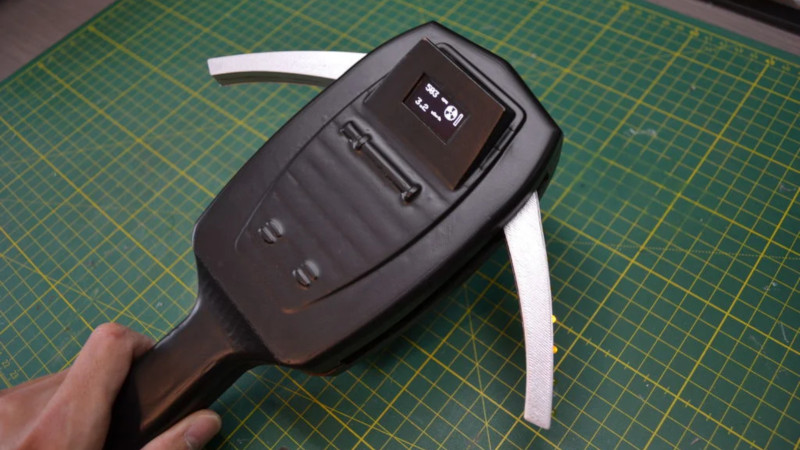Fans of Ghostbusters will remember the PKE meter, a winged handheld device capable of detecting supernatural activity. Precious little technical data on the device remains, leaving us unable to replicate its functionality. However, the flashing, spreading wings serve as a strong visual indicator of danger, and [mosivers] decided this would be perfect for a Geiger counter build.
An SBM20 Geiger tube serves as the detection device, hooked up to an Arduino Nano. An OLED display is used to display the numerical data to the user. The enclosure and folding wings are 3D printed, and fitted with 80s-style yellow LEDs as per the original movie prop.
The device is quite intuitive in its use – if the wings flare out and the lights are flashing faster, you’re detecting an increased level of radiation. In a very real sense, it makes using a Geiger counter much more straightforward for the inexperienced or the hearing impaired. Naturally, there’s also a buzzer generating the foreboding clicks as you’d expect, too.
Geiger counters are a popular project, though we hope they don’t become common household items in the near future. Here’s a Fallout-inspired build for fans of the game. Video after the break.
















Ironically, a real Gamma Rate Meter IM-179 was used in the original Ghostbusters movie.
Not as a PKE meter though… B^)
(I have a IM-179 at home)
(Some could argue that the IM-179 was not a “real” GRM) B^)
https://www.gbfans.com/equipment/other/gamma-rate-meter/
I like how it says “red : take cover”
Awesome build!
If it measures 3.6 Roentgens does the screen say “Not great, not horrifying”? :D
If you can’t get the small HV PCB, its possible to retrofit one from an actual Geiger counter.
I have two types here, one is a small black block which has 3 pins and the other is functionally identical but has 3 wires and is substantially smaller.
Both work but may require adjustment of the input pulse width or output tuning to get a sensible count rate without damaging tubes intended for <400V, originally intended for a compensated tube requiring more voltage. Either way it does need an output resistor or it will fail on the first discharge.
Also worth a try: I built some tiny HV generator modules using HV850 and these work well for certain applications if output resistors are added and some simple precautions such as insulation in case of damp conditions.
These are intended for very low voltage <200V avalanche diodes but will at a pinch work if current draw is very low.